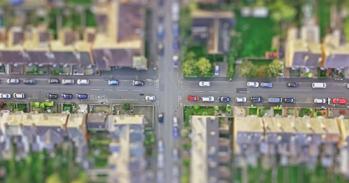
Terrorist groups, guerrilla movements, drug smuggling: Mette Eilstrup-Sangiovanni asks whether examining the structural weaknesses of illicit networks holds the key to combating them.
Terrorist groups, guerrilla movements, drug smuggling: Mette Eilstrup-Sangiovanni asks whether examining the structural weaknesses of illicit networks holds the key to combating them.
The absence of centralised leadership in clandestine networks makes decision-making difficult, particularly with regard to complex decisions such as resource allocation, tactics, and whether and when to use violence.
Networks appear to be defining relations everywhere in today’s globalised societies: international bankers, financial regulators, law enforcement officials, even legislators cooperate informally across borders to share information and coordinate policies. But networks are not confined to the realms of international politics and finance. Arms dealers, drug traffickers, money launderers, people smugglers, terrorists and other sundry criminals, enabled by the newest technologies, increasingly organise into sprawling global networks like that of the infamous al-Qaeda organisation.
Dr Mette Eilstrup-Sangiovanni, based in the Centre of International Studies, has been researching the structural properties of networked organisations in international politics. Understanding the strengths and weaknesses of networks might open the door to more effective forms of international governance and more innovative ways of combating transnational criminal and terrorist groups.
Networked crime and terrorism
Networks feature prominently in today’s international security landscape. According to many policymakers and pundits, the primary confrontation in world politics in the 21st century is no longer between states but between states and terrorist networks such as al-Qaeda, drug smuggling networks like those in Colombia and Mexico, and insurgent networks such as those in Afghanistan and Iraq. And states are widely reputed to be losing the battle. For example, Peter Clarke, who leads the anti-terrorist branch of London’s Metropolitan Police, described the networks of radical Islam as ‘large, fluid, mobile, and incredibly resilient.’ It is this fluid structure that is said to provide terrorists and criminals with multiple advantages, including adaptability, mobility and covertness, and which makes them difficult for more-stable, hierarchical states to combat.
Just how do networks differ from hierarchies? Networked organisations are flat and decentralised, with decision-making and action dispersed among multiple actors enjoying significant local autonomy and relating to each other through informal, horizontal ties. Hierarchies rely on top-down command, authoritative rules and legal arbitration; by contrast, networks are self-enforcing governance structures disciplined by reputation and reciprocity. Consequently, networks tend to be based on direct personal contacts among people who share similar backgrounds and goals, and who trust one another.
Most current literature on clandestine groups assumes that networks, due to their informal, flexible design, are better than hierarchies at learning, innovating and responding to new situations. However, Dr Eilstrup-Sangiovanni’s research suggests that the many advantages claimed for networks in their competition with hierarchical states rest on a poor understanding of the network form. Scholars and policymakers have tended to overestimate the strengths of clandestine networks through drawing parallels to the world of the ‘company’, where networked modes of organisation have proved highly adapted to the fast-moving global marketplace. Yet, clandestine organisations – whether they are terrorist groups, guerrilla movements or drug smuggling enterprises – face a unique set of constraints that distinguish them from their legal, commercial counterparts and which limit their effectiveness.
An historical approach
Although most observers assume that today’s transnational networked threats are new phenomena, opposition to the state has in fact often taken a networked approach, as illustrated by the decentralised Greek resistance to the Ottomans in the early 19th century, by the sprawling International Anarchist Movement in the late 19th century, and by the Muslim Brotherhood’s loosely organised, dispersed resistance to the Egyptian state in the 20th century. Drawing on such historical and contemporary examples of participation in underground movements, terrorism and insurgency, and organised crime, Dr Eilstrup-Sangiovanni’s research has identified structural weaknesses in illicit networked organisations connected to their growth, decision-making and internal cohesion.
Restricting growth
Clandestine networks often find it difficult to grow their ranks. Because illicit networks cannot depend on the legal system to resolve disputes, they are crucially dependent on interpersonal trust. It is easier to generate trust in small groups when the ‘social distance’ between actors is short, and chains of action are not extended. This favours small networks.
It is also easier to generate trust when actors are homogeneous in outlook, lifestyle and culture. This is why recruitment to clandestine networks mostly proceeds through pre-existing networks of personal relationships. Terrorist groups tend to rely on bonds of family or friendship, and contemporary drug trafficking largely occurs within ethnically homogeneous groups, where kinship generates trust among criminals. These recruitment practices also restrict the potential size of clandestine networks.
Making decisions
The absence of centralised leadership in clandestine networks makes decision-making difficult, particularly with regard to complex decisions such as resource allocation, tactics, and whether and when to use violence. A lack of centralised control also makes networks susceptible to internal strife. Once made, decisions may not be respected as readily due to the lack of an authoritative stamp. As a result, resources may be used poorly, contradictory tactics selected and activities carried out that serve parochial short-term interests rather than the larger mission. Moreover, internal security is often fragile in clandestine networks, leaving them open to infiltration.
The absence of central authority may also lead to strategic and tactical errors because local autonomy means operations can go forward without evaluation, coordination and sober assessment of the overall benefits and risks. A good example is the Madrid bombings in 2004: lacking central oversight and screening of activities, the Madrid group’s efforts to recruit members and acquire arms brought them into contact with police informants; the bombs they used were of poor quality; and an unexploded bomb provided information that led to arrests just days after the bombings.
Confronting clandestine networks
Analysing the progression of al-Qaeda exemplifies the importance of understanding how networks are structured. Since the attacks of 11 September 2001, al-Qaeda has evolved from a fairly centralised command-and-control organisation, running training camps and occupying territory in Afghanistan, into a diffuse transnational network of associate groups and ad hoc cells.
Many believe al-Qaeda’s transformation has made it a more formidable enemy, better capable of growing its ranks and avoiding detection. But decentralisation and segmentation have also exposed al-Qaeda to the gamut of organisational dilemmas associated with a networked structure. As it becomes more networked, al-Qaeda appears to be losing unity, cohesion and the ability to act collectively.
Al-Qaeda’s most successful operations, including the September 11 attacks, took place when the organisation adopted a hierarchical structure. In the aftermath of 9/11, al-Qaeda was forced to segment into smaller operational units, and affiliated groups have started to act on their own initiative without central approval and guidance, leading to poorer security practices. Al-Qaeda’s increased reliance on informal links to global jihad groups around the world also appears to be leading to fractiousness as groups differ in their understanding of
overall goals and strategy.
Attention to these and similar weaknesses has important implications for counter-terrorism policy. Through understanding the structural weaknesses of clandestine networks, it is hoped that states can improve their strategic thinking about how to combat them.
For more information, please contact the author Dr Mette Eilstrup-Sangiovanni (mer29@cam.ac.uk) at the Centre of International Studies. This research, and related research on transgovernmental security networks, received funding from the Airey Neave Trust.
This work is licensed under a Creative Commons Licence. If you use this content on your site please link back to this page.





